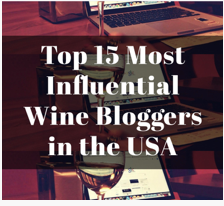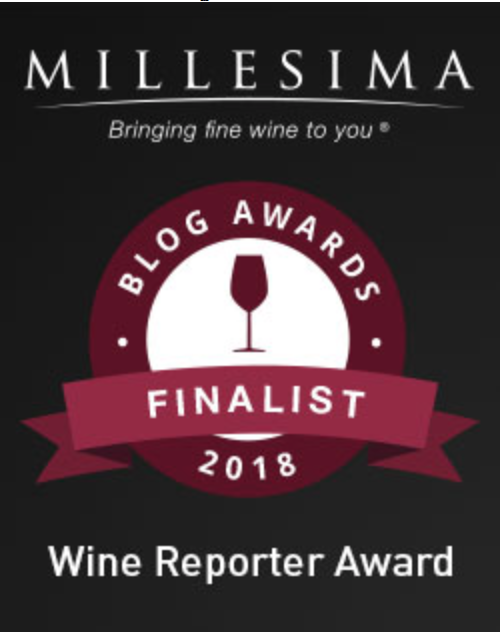A couple of weeks ago, I invited a few writers here in Houston to my house for what I believe to be was the largest blind tasting of American True Rosés of the year.
What is a “True Rosé”?
Well, there are essentially three ways to make a rosé wine. The first, which is rarely practiced outside of sparkling wine production, is simply a blend of red wine and white wine. The second, which is widely practiced around the world, is called the “Saignée Method” where shortly after red grapes are crushed, a portion of the grape juice (after brief contact with the skins) is bled off (“saignée” means “bled” in French). This bled-off wine is then vinified as if it were a white wine.
The third option is what I call a “True Rosé.” In this process, the grapes are raised, picked, and processed with the singular idea of making rosé in mind. True Rosés are therefore not a byproduct of red wine production (like saignées), they are intentionally or purposefully made. They are True Rosés.

All 64.
I have been fortunate enough to be on a few press trips due to this little blog and thus I have visited numerous wine regions with other members of the media. Many of them have become friends and I look forward to reconnecting when we are paired once again on a trip or at a tasting.
There is one aspect of this familiarity that is a bit of a pain in the rear, however. Whenever I taste a new (to me) rosé, I always ask whether it is a True Rosé or not. Why? I’ll get to that below. It becomes a pain in the rear because the other wine writers in the group (at least those who know me) let out a collective groan as if to say “Here he goes, again.”
I never ask, but my question to those other writers (and PR people for that matter) is “Why aren’t you asking this question??”
I am about to go into the weeds of wine writing/wine geekdom here, so if you would rather not end up with a headache, skip the section below in BLUE.
In general, wine writers want to know about all aspects of wine production from the broad (e.g., what grape varieties are used) to the ridiculously sublime (not just if oak is used, but American or French [or Hungarian, etc.], what “toast” [the amount of charring done to the barrel] is applied, even the particular effing forest from whence came the trees).
But I have never heard a single writer (other than me) ask about how a particular rosé was made (I know this for a fact since had someone else asked, I would have dropped to a knee and proposed on the spot, regardless of gender or either of our individual marital statuses).
The same is not true when the discussion turns to sparkling wine and most people want to know the method used. Specifically, writers (and therefore their readers) want to determine whether the given wine was made using the “traditional method” (i.e., it was made in the same fashion as champagne) or not.
That does not seem to be the case when it comes to rosé, for whatever reason, which is too bad for the simple fact that those winemakers who make an intentional rosé (again, what I call a “True Rosé”) tend to be pretty darned enthusiastic about it. And, let’s not forget, that True Rosés tend to be better than their saignée counterparts.*
*Here I insert my regular disclaimer that there are many fine saignées out there (including one of my favorite rosés, the Tongue Dancer Rosé of Pinot Noir) but all things being equal, a rosé made with intention will be better than one that is a byproduct of red wine production.
OK. Enough geekiness.
 A couple of weeks ago, our intrepid group tried 64 American Rosés on a sweltering Saturday, trying to find the best. As promised, I am publishing my actual notes from the tasting, which we tasted in 16 flights of 4 wines. Here is the fifth set of two flights.
A couple of weeks ago, our intrepid group tried 64 American Rosés on a sweltering Saturday, trying to find the best. As promised, I am publishing my actual notes from the tasting, which we tasted in 16 flights of 4 wines. Here is the fifth set of two flights.

**2022 La Crema Pinot Noir Rosé, Monterey, CA: Retail $25. Very Responsible Bottle (472g; 16.6oz). Medium to dark in color with a lovely fruity nose of tree fruit (peach) and cream. Rich and tart on the palate, this is certainly on the bigger side of rosé with plenty of fruit and a balancing tartness. Big, but nice. Excellent. 92 Points.
2023 Pisoni Family Vineyards Lucy Rosé of Pinot Noir, Santa Lucia Highlands, CA: Retail $24. Very Responsible Bottle (491g; 17.3oz). Light to medium with some melon and citrus on the nose. The palate is another fantastic, almost quintessential American rose. Great. Outstanding. 94 Points.
*2022 Covenant Red C Rosé, California: Retail $35. Responsible Bottle (564g; 19.9oz). Grenache, Pinot Noir, and Syrah. Light with seemingly more of an orange hue than pink. The nose is a bit different. My wife says parsley I say more of a roasted corn. The palate, while quite tart, is much better than the nose with nice fruit. Very Good. 88 Points.
*2022 C.L. Butaud Pa Pa Frenchy Rosé, Texas High Plains, TX: Retail $15. Very Responsible Bottle (491g; 17.3oz). I really loved this wine last year (95 pts), but this bottle, less so. Medium color, on the verge of dark for a rosé with a metallic aspect blurring the fruit. A bit flabby on the palate with an odd mélange of non-traditional rose flavors. Very Good. 88 Points.

Shortly after noon, we stopped for lunch: my Wagyu Fajitas with Poblano Peppers and Fresh Guacamole.
2023 Domaine Carneros Pinot Noir Rosé Avant Garde, Carneros, CA: Retail $32. Light pink with a rich nose, full of melon, red fruit, really fantastic. The palate is rich and engaging, full and gangbusters. This is what American rosé can be. Outstanding. 94 Points.
*2022 Clif Family Winery Grenache Rosé, Mendocino, CA: Retail $30. Very Responsible Bottle. 490g; 17.3oz). Tart and savory nose in this really light colored wine with a nose that goes on for days. Rich, unctuous, on the verge of over the top. Excellent. 92 Points.
2023 The Calling Pinot Noir Terra de Promissio, Sonoma Coast, CA: Retail $43. Medium pink in color with a rich, ripe, strawberry on the nose. The palate is quite ripe, rich, and unctuous. It also comes off as a bit sweet. I wonder what the residual sugar is on this wine? Very Good. 89 Points.
2023 Cattleya Alma de Cattleya Rose of Pinot Noir, Sonoma County, CA: Retail $20. Medium color with really ripe fruit on the nose. Strawberry, melon, cherry. Good fruit, tartness on the palate, but there is a slightly odd note here (medicinal) that certainly detracts from the fruit. Very Good. 88 Points.
Flights 1-3 Flights 4-6 Flights 7-9 Flights 10-12
Note: Wines with one asterisk (*) were second bottles from last year’s tasting. Wines with two asterisks (**) I actually purchased to include in the tasting.
More coming soon!







